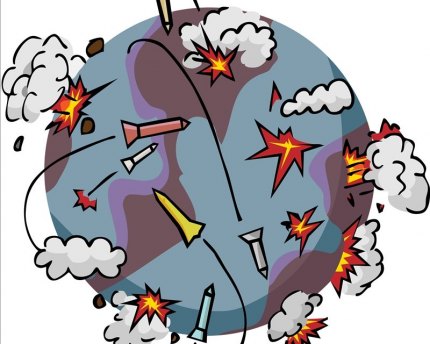The Reykjavík Summit: The Cold War thaws

The meeting in Reykjavík, Iceland, on Oct.11-12, 1986, is known as the Reykjavík Summit of 1986. While ultimately unsuccessful, it was an ambitious attempt to move historic adversaries into a post-Cold War future.
Here is a compressed account, along with links for further study:
Reagan meets Gorbachev: The two met for the first time on Nov. 19, 1985, in Geneva, Switzerland. During a discussion, they acknowledged that their systems were different, but “they agreed about the need to improve U.S.-Soviet relations and the international situation as a whole,” according to a joint statement made by the U.S. and Soviet Union after the meeting.
In a memo dated Jan. 29, 1986, then-Secretary of State George P. Shultz, reasons, “We should see this as an opportunity to transform Gorbachev’s concept so that it matches your own vision for achieving a non-nuclear world."
He added, “Some will argue that Gorbachev’s initiative is cynical propaganda and that any substantive response on your part would somehow be ‘rewarding his intransigence.’ Who knows. While Gorbachev is, of course, out to protect his own interests, he has at the same time made concrete proposals to advance the personal dialogue the two of you began in Geneva.”
The stage: The meeting was set at the Hofdi House in Reykjavík -- once the residence of the French consul in Iceland. Neither the Americans nor the Soviets wanted the meeting in Washington or Moscow, as "it was understood that such a summit would be associated with signing a major arms control treaty, but none was in sight. Reykjavik was intended as an 'intermediate' meeting that should have given a boost to negotiations," says the website for the Nuclear Threat Initiative, a Washington, D.C.-based nonprofit.
A little drama: As with all political meetings, there was drama. Raisa M. Gorbachev, the Soviet first lady, had traveled with her husband. But Nancy Reagan, first lady of the U.S., remained in Washington.
“Some of the Americans felt that the Russians had put one over on them by not giving more notice that Mrs. Gorbachev would be going to Iceland, so Mrs. Reagan's schedule could be arranged to permit her to go, too,” wrote Maureen Dowd in The New York Times in an article on Oct. 12, 1986. Alone in the spotlight, Raisa Gorbachev, “managed to not-so-delicately reinforce the opinion in this country that her husband is trying harder than President Reagan to gain an arms-control agreement.”
The substance: Reagan and Gorbachev hit an obstacle when discussing the U.S. Strategic Defense Initiative -- also known as Star Wars. The initiative envisioned a space-based missile defense program, according to an account on the U.S. State Department website.
Reagan refused to limit the program's research and technology to laboratory projects, recounts Encyclopedia Britannica. “Gorbachev, however, would not accept anything less than a ban on missile testing in space.”
After Reagan left office, the government's commitment to the Strategic Defense Initiative waned. (See more on the U.S. State Department's archived website.)
The upshot: Accounts of the summit say it ended in failure, and it did. But it was an important step, setting the scene for the 1987 INF (Intermediate Nuclear Forces) and the 1991 START I (Strategic Offensive Arms Reductions) treaties, along with limitations on nuclear testing, according to the Nuclear Threat Initiative.
As such, the Reykjavík Summit has been described as a turning point in the Cold War.
To know more:
- The BBC: 1986, Reykjavik summit ends in failure.
- Encyclopedia Britannica: Reykjavík summit of 1986.
- National Security Archive at George Washington University: Memo to President Ronald Reagan by Secretary of State George P. Shultz, Jan. 29, 1986.
- National Security Archive at George Washington University: Gorbachev's Nuclear Initiative and the Road to Reykjavik, posted Oct. 12, 2016.
- The New York Times: The Iceland Summit, Charm and Cough Drops, Raisa Gorbachev’s Reykjavík visit, by Maureen Dowd, Oct. 12, 1986.
- Nuclear Threat Initiative: Reykjavik Summit, The Legacy and a Lesson for the Future.
- Ronald Reagan Presidential Library and Museum: Statement by Principal Deputy Press Secretary Larry Speakes on United States Nuclear Testing Policy, Oct. 10, 1986.
- Reagan Presidential Library: Joint Soviet-United States Statement on the Summit Meeting in Geneva, Nov. 21, 1985.
- Reagan Presidential Library: The Reykjavik summit.
- U.S. State Department Archive online: Strategic Defense Initiative (SDI), 1983.
Related:
Four reports shed light on Cold War thought
Four phrases associated with the Cold War
Follow StudyHall.Rocks on Twitter.If you would like to comment, like us on Facebook and tell us what you think.

